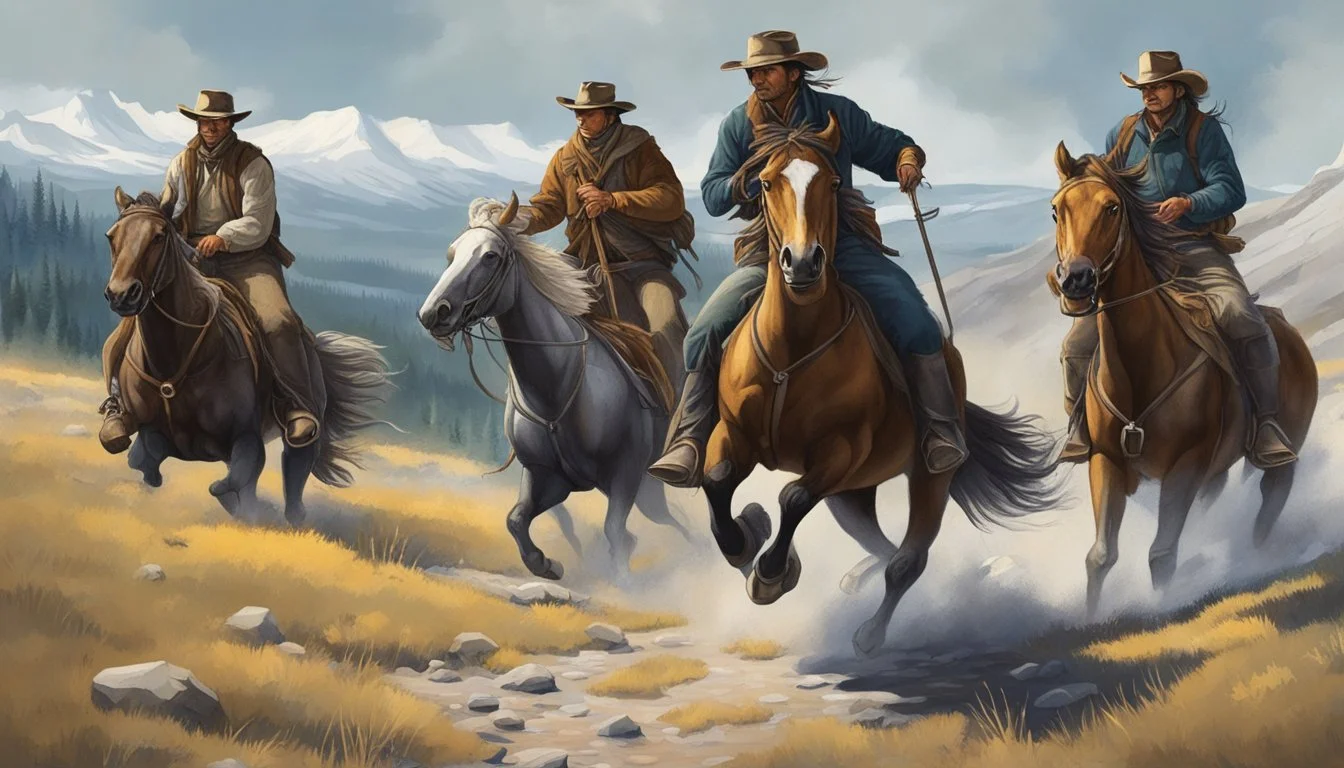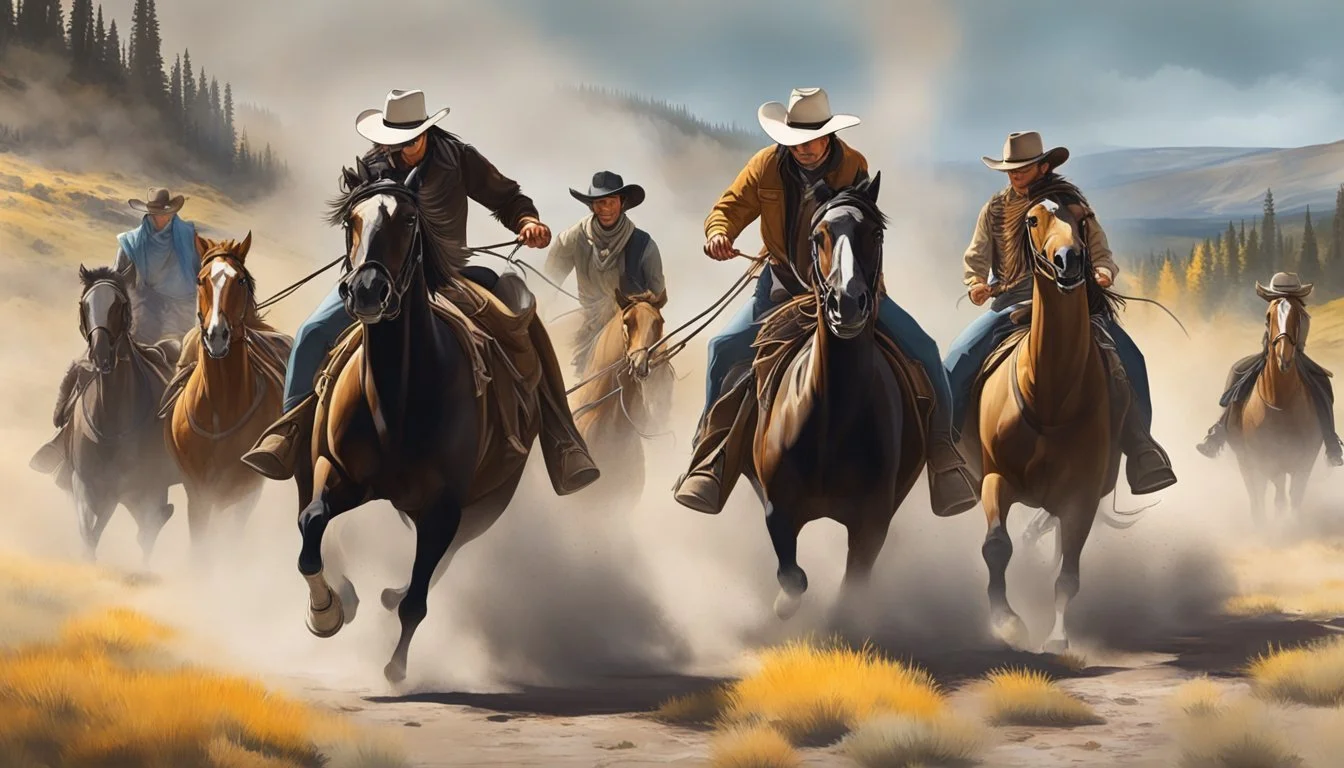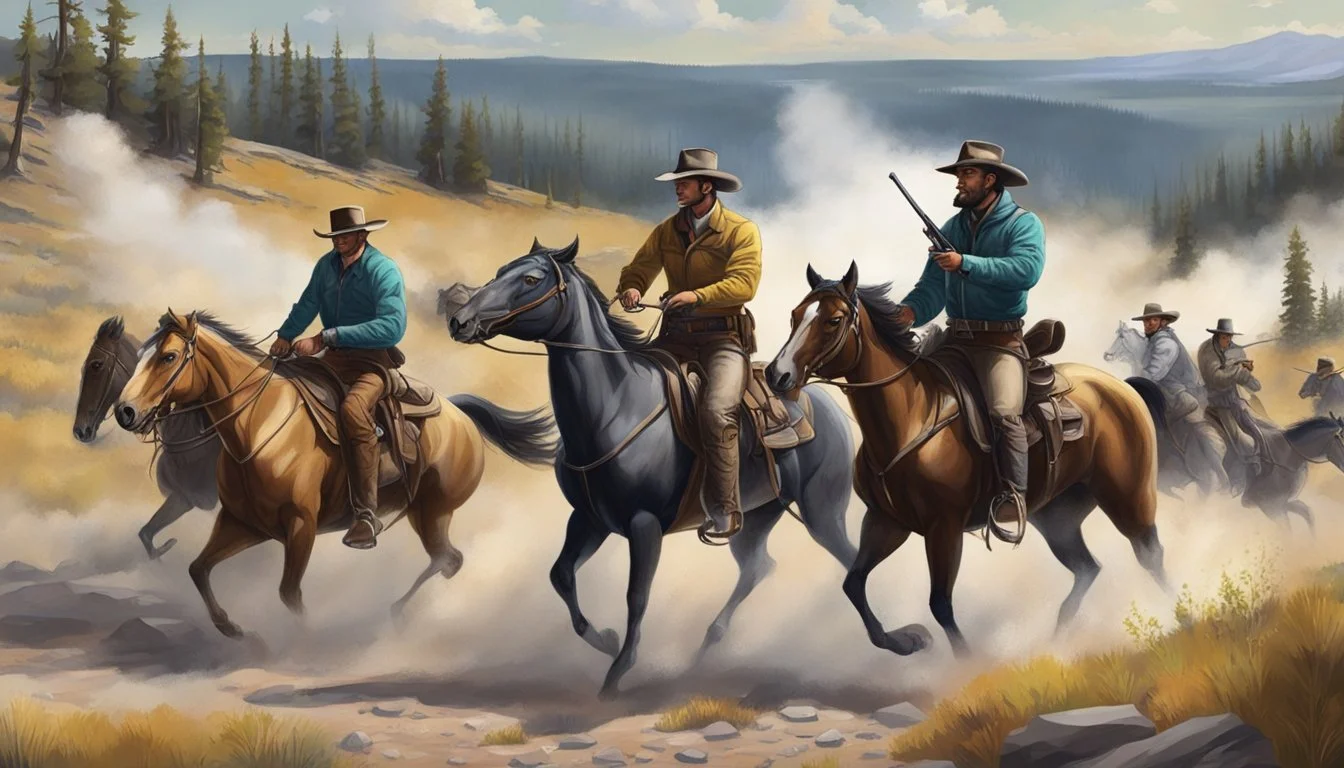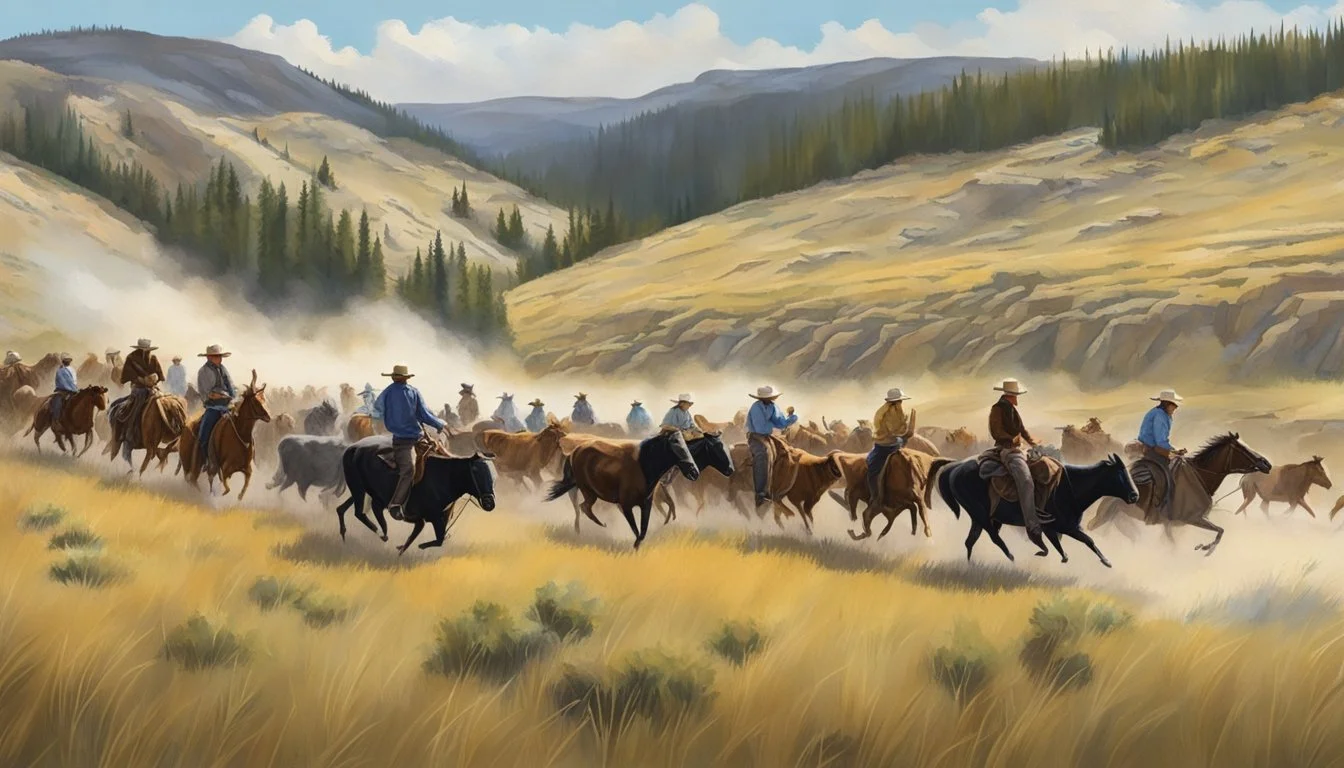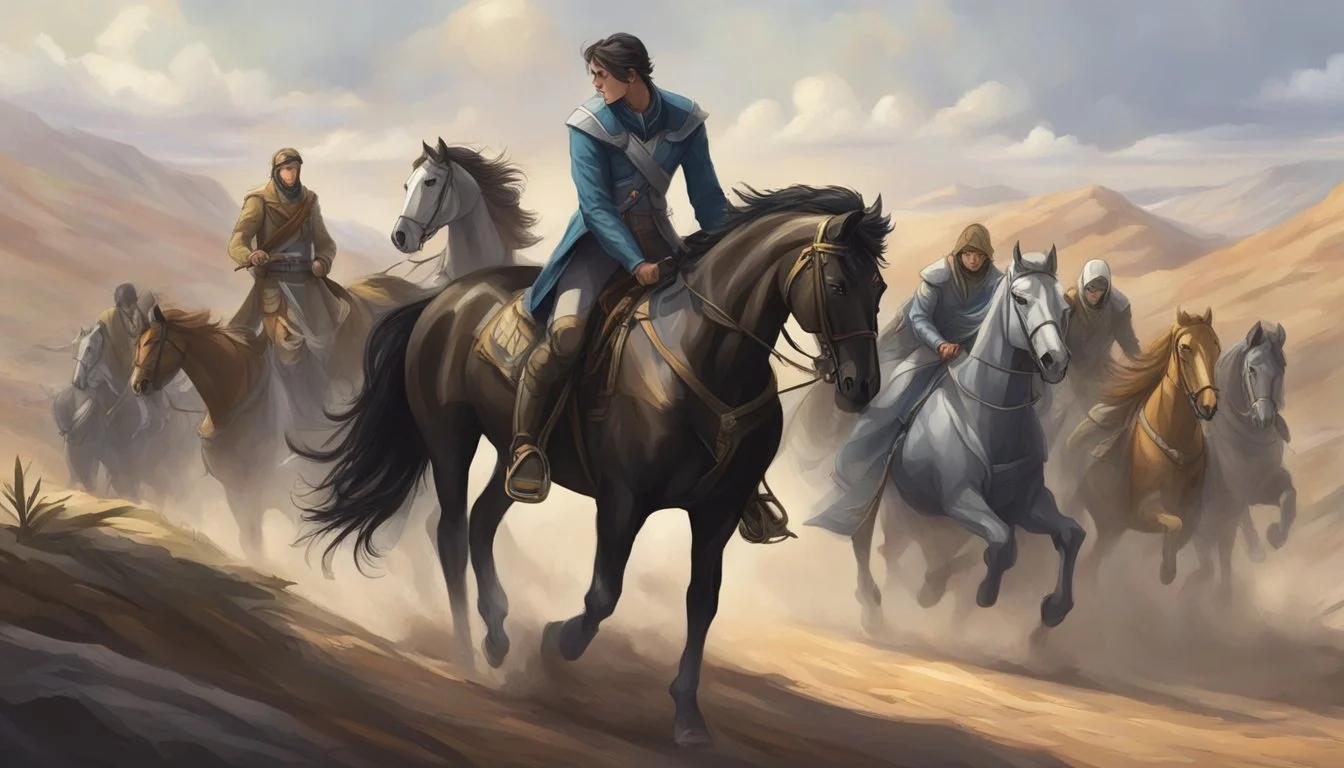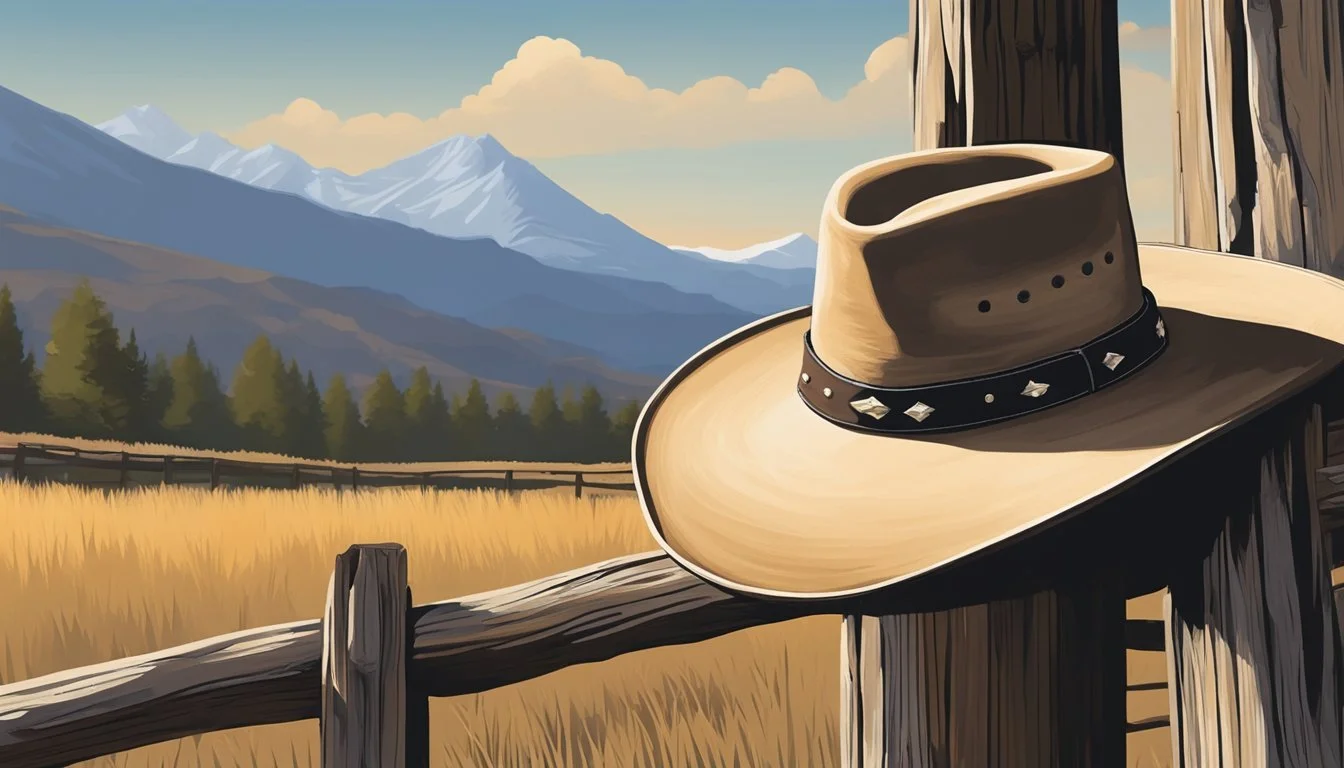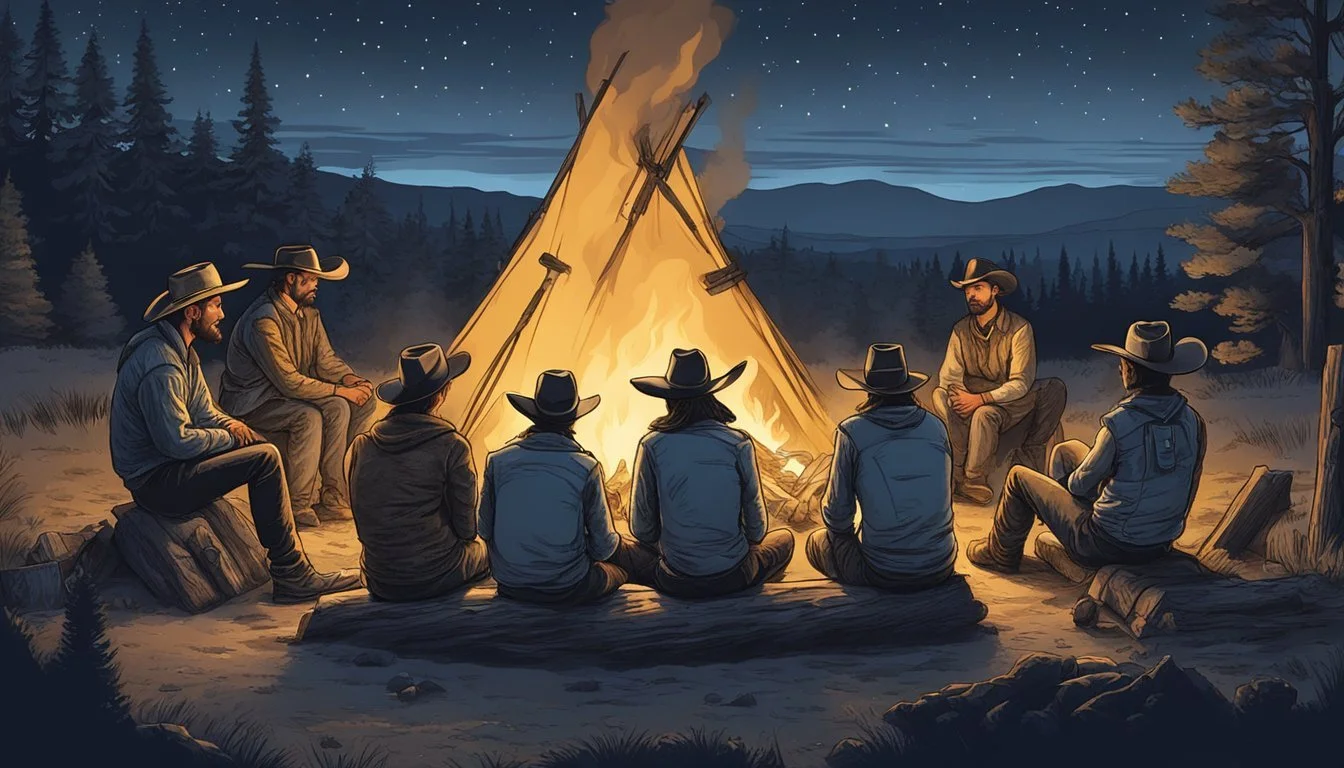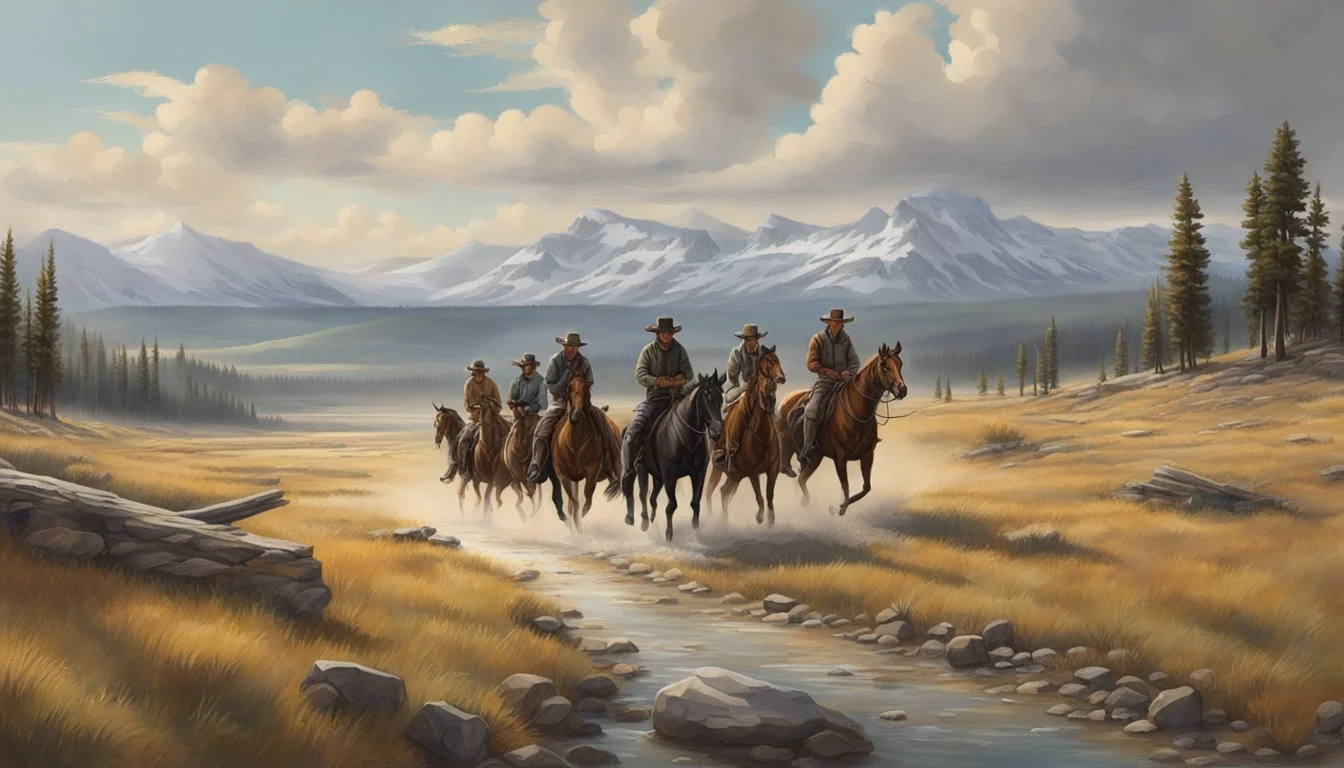Shocking Truth Revealed How Many Animals Die in Yellowstone's Harsh Reality
The popular television series Yellowstone has captivated audiences with its intense drama and stunning wilderness backdrop. As viewers follow the Dutton family's struggles to maintain their ranch, many have wondered about the fate of animals depicted on the show.
While exact numbers are difficult to pinpoint, the death toll for animals in Yellowstone appears relatively low compared to human casualties. In the first season, a horse and a bear are shot. Later episodes feature poisoned cows and additional horse deaths, though these are often implied rather than graphically shown on screen.
Animal welfare has been a topic of discussion surrounding the show's production. A whistleblower reported concerns about on-set incidents, prompting increased scrutiny of animal handling practices. Despite these controversies, Yellowstone continues to use animals as an integral part of its storytelling, reflecting the realities of ranch life in the American West.
Yellowstone Series Overview
Yellowstone is an American neo-Western drama television series created by Taylor Sheridan and John Linson. The show premiered on Paramount Network in June 2018 and concluded its run in December 2024.
Kevin Costner stars as John Dutton, the patriarch of the powerful Dutton family. The series revolves around the conflicts and challenges faced by the Duttons as they operate the largest contiguous cattle ranch in the United States.
Set in Montana, Yellowstone explores themes of family loyalty, political intrigue, and the struggle to maintain control over valuable land. The Dutton family must navigate complex relationships with local Native American tribes, land developers, and government officials.
The show features a talented ensemble cast, including Luke Grimes, Kelly Reilly, Wes Bentley, and Cole Hauser. Their performances bring depth to the complex characters and relationships within the Dutton family.
Yellowstone gained a dedicated fanbase over its six-season run. The series is known for its stunning cinematography, capturing the beauty of Montana's landscapes, and its intense, often violent storylines.
The show's success led to the creation of several spin-off series, expanding the Yellowstone universe and further exploring the Dutton family's history and legacy.
Major Deaths in Yellowstone Series
The Yellowstone series features numerous impactful character deaths that shape the plot and affect viewers emotionally. Both Dutton family members and external characters meet their ends in dramatic fashion throughout the show's run.
Prominent Characters' Demise
Lee Dutton's death in the pilot episode sets a precedent for the series' willingness to eliminate key players. As John Dutton's eldest son and heir to the Yellowstone Ranch, Lee's demise in a cattle dispute with the Broken Rock Reservation sends shockwaves through the family.
Dan Jenkins, a wealthy developer and rival to the Duttons, meets a grisly end. His death highlights the brutal nature of power struggles in the Yellowstone universe.
Donnie Haskell, the local sheriff, is killed in the line of duty. His passing underscores the dangers faced by law enforcement in the show's volatile setting.
Seasonal Death Patterns
Season 1 establishes a pattern of significant character deaths, starting with Lee Dutton. This trend continues in subsequent seasons, with each new installment bringing fresh casualties.
Season 5 sees the heartbreaking loss of John Dutton IV, Kayce and Monica's baby. This death stands out as one of the series' most emotionally impactful moments.
Clint Morrow and Emmett Walsh also meet their ends in later seasons, further thinning the ranks of long-standing characters. These deaths serve to escalate tensions and drive the plot forward in new directions.
Death Causes and Motivations
Animal deaths in Yellowstone stem from various sources, ranging from human-driven conflicts to natural occurrences. The show portrays the harsh realities of ranch life and the dangers that wildlife face in the rugged Montana landscape.
Conflicts and Rivalries
Human conflicts often lead to animal casualties in Yellowstone. Rival ranchers sometimes target each other's livestock as a form of retaliation or intimidation. In season 2, a shocking incident involves the mass death of cattle, allegedly due to poisoned alfalfa hay. This event highlights the extreme measures taken in ranch feuds.
Poaching also contributes to wildlife deaths. The Dutton family frequently confronts poachers on their land, resulting in confrontations that sometimes end fatally for the animals caught in the crossfire.
Accidents and Natural Causes
Not all animal deaths in Yellowstone are intentional. Accidents play a significant role, such as vehicle collisions with wildlife on rural roads. These incidents serve as stark reminders of the challenges of coexisting with nature.
Natural causes also account for animal fatalities. Harsh winters, predator attacks, and diseases can claim the lives of both livestock and wild animals. The show depicts these events to illustrate the unforgiving nature of the Montana wilderness.
Yellowstone sometimes portrays animal deaths resulting from conservation efforts gone wrong, underscoring the complex relationship between humans and wildlife management.
Character Spotlights
The Yellowstone series features complex characters whose actions often lead to animal deaths. Key figures like John Dutton and his adversaries play pivotal roles in shaping the show's narrative and its depiction of wildlife casualties.
John Dutton's Journey
John Dutton, the patriarch of the Dutton family, stands at the center of Yellowstone's conflicts. His fierce protection of the ranch often results in clashes with wildlife and rival factions. John's decisions frequently impact the local fauna, both directly and indirectly.
His methods of ranch management sometimes lead to animal casualties, particularly when dealing with predators threatening livestock. John's character evolution throughout the series reflects changing attitudes towards conservation and land use.
Antagonists and Allies
The show's antagonists and allies contribute significantly to animal-related incidents. Rival ranchers, land developers, and government officials often clash with the Duttons, leading to situations where wildlife becomes collateral damage.
Key characters like Dan Jenkins and the Beck brothers pursue agendas that threaten both the Dutton ranch and the surrounding ecosystem. Their actions sometimes result in unintended consequences for local wildlife. Allies of the Duttons, such as Rip Wheeler, also play a role in animal encounters, often tasked with protecting the ranch's interests at the expense of wildlife.
Yellowstone's Livestock and Wild Fauna
Yellowstone's ecosystem encompasses diverse wildlife and historical livestock presence. The park's animals face natural challenges and human interactions, shaping population dynamics.
Role of Livestock in the Narrative
Livestock played a significant role in Yellowstone's early history. Ranchers grazed cattle and sheep in park meadows before its establishment as a national park. This practice ended in the early 20th century to protect native wildlife and vegetation.
Today, no livestock grazing occurs within park boundaries. However, surrounding areas still support ranching operations. These nearby farms occasionally impact wildlife through competition for resources and potential disease transmission.
Wildlife Interactions
Yellowstone hosts an array of iconic species. Bison, elk, wolves, and bears dominate the landscape. These animals interact in complex food webs, with predator-prey relationships shaping populations.
Natural mortality occurs due to various factors:
Predation
Harsh winters
Old age
Disease
Human-wildlife conflicts also contribute to animal deaths. Park regulations require visitors to maintain safe distances:
100 yards from bears and wolves
25 yards from other wildlife
Despite precautions, injuries and rare fatalities happen. Bison encounters cause more human injuries than any other animal in the park. Wildlife management focuses on maintaining natural processes while ensuring visitor safety.
Impact of Death on the Plot
Death plays a pivotal role in shaping Yellowstone's narrative. Both human and animal deaths serve as catalysts for major story developments and character arcs.
The loss of key characters creates power vacuums and shifts alliances. When important figures die, it often leads to intense conflicts over succession and control of resources.
Animal deaths, while less frequent, can have significant repercussions. The shooting of a horse or bear may trigger investigations or vendettas against the perpetrators.
Large-scale livestock deaths, such as the cattle die-off depicted in Season 2, pose existential threats to ranching operations. These events force characters to take drastic measures to protect their livelihoods.
The deaths of Dutton family members carry particularly heavy weight. They not only drive the plot forward but also deepen the emotional stakes for surviving characters.
Unexpected deaths contribute to the show's reputation for unpredictability. This keeps viewers engaged and heightens tension, as no character feels truly safe from harm.
By intertwining human and animal mortality, Yellowstone creates a complex web of consequences. Each death ripples outward, affecting multiple storylines and reinforcing the show's themes of survival and legacy.
Production Insights
Filming death scenes in Yellowstone requires careful planning and execution. Writers approach these pivotal moments with purpose, aiming to serve the show's narrative and thematic goals.
Filming Death Scenes
Yellowstone's production team employs various techniques to bring death scenes to life on screen. They use a combination of practical effects and CGI to create realistic and impactful visuals. Stunt coordinators work closely with actors to ensure safety during intense sequences. The show's cinematographers use specific lighting and camera angles to heighten the emotional impact of these scenes. Sound designers add layered audio effects to enhance the realism and intensity of each death portrayed.
Writer's Perspective on Death
Taylor Sheridan, Yellowstone's creator, views death scenes as essential elements of the story. He crafts these moments to serve multiple purposes within the narrative. Deaths often drive character development, propel plot points forward, or illustrate the harsh realities of the show's world. Sheridan aims to balance shock value with meaningful storytelling, ensuring each death carries weight and consequences for the surviving characters. The writing team carefully considers the timing and method of each character's demise to maximize its impact on the audience and the overall story arc.
Reception and Audience Reaction
Yellowstone's depiction of animal deaths has sparked mixed reactions among viewers. Some fans appreciate the show's unflinching portrayal of ranch life, including the harsh realities animals face.
Others have expressed discomfort with scenes involving animal harm. A Reddit thread revealed that several viewers were particularly affected by the deaths of horses in seasons 1 and 3.
Concerns about animal welfare have led some potential viewers to seek information before watching. Questions about the frequency and graphic nature of animal deaths are common in online forums.
The show's creators have addressed these concerns, emphasizing that no real animals are harmed during filming. Trained animal actors are used, with safety measures in place on set.
Despite occasional controversy, Yellowstone maintains a dedicated fanbase. The series' raw depiction of the modern American West, including its treatment of animals, continues to be a topic of discussion among viewers.
Thematic Analysis
Animal deaths in Yellowstone serve as powerful metaphors, illustrating the harsh realities of frontier life and the complex relationship between humans and nature. These incidents highlight key themes that run throughout the series.
Power and Mortality
Animal deaths in Yellowstone often symbolize power dynamics and the fragility of life. The show's opening scene, featuring a horse being euthanized, sets a tone of brutality and necessity. This act demonstrates the Dutton family's authority and their willingness to make difficult decisions.
Cattle deaths, whether from poisoning or other causes, represent threats to the ranch's livelihood. These incidents underscore the precarious nature of ranching and the constant struggle for survival in a challenging environment.
Predator encounters, such as bear attacks, remind viewers of nature's unpredictability and power. These scenes reinforce the idea that humans are not always at the top of the food chain, despite their attempts to control the land.
Man vs. Nature
Yellowstone portrays a constant struggle between human ambition and the untamed wilderness. Animal deaths often occur as a direct result of this conflict, highlighting the consequences of human encroachment on natural habitats.
Hunting scenes depict the traditional relationship between humans and wildlife, emphasizing both skill and respect for nature. However, these scenes also raise questions about conservation and the ethical treatment of animals.
Wildlife management issues, such as dealing with problem predators or controlling herd populations, illustrate the complex balancing act between human interests and ecosystem preservation. These storylines explore the responsibilities and challenges faced by those living on the frontier.
The show uses animal encounters to emphasize the raw beauty and danger of the Yellowstone region, reminding viewers of the delicate equilibrium between civilization and wilderness.

